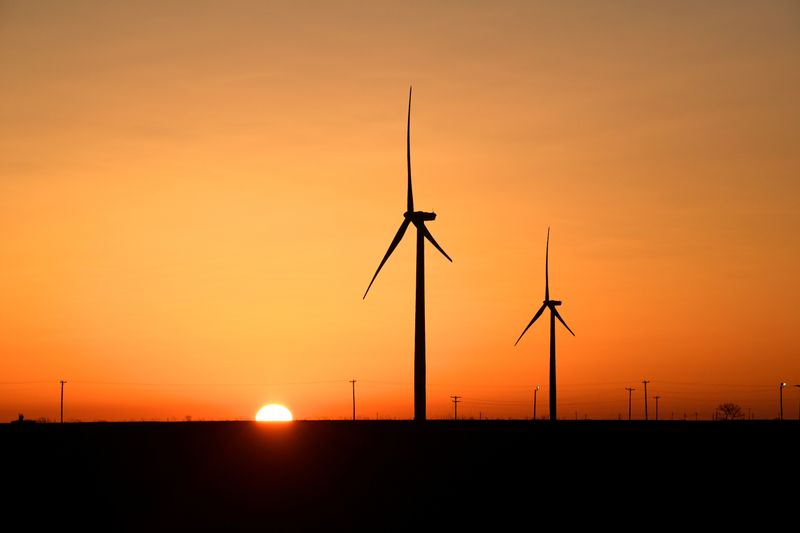By Gavin Maguire
LITTLETON, Colorado (Reuters) – Drops in power generation from wind farms, hydro dams and nuclear reactors has forced the operator of the electric grid in Texas – one of the largest power systems in the United States – to boost fossil fuel use and emissions so far this year.
Rising use of air conditioners due to high temperatures have boosted power use and spurred the Electric Reliability Council of Texas (ERCOT) to ask electricity generators to delay or cancel planned outages this week.
But tight supplies of clean power have meant that ERCOT system managers have been forced to crank generation from fossil fuels to balance system needs.
Through mid-April, ERCOT has lifted coal-fired power generation by 5% from the same period in 2023, and output by 12%, according to data compiled by LSEG.
That higher production has lifted ERCOT’s total fossil fuel-powered generation by 10% from the same period in 2023.
In contrast, ERCOT generation from clean power sources has expanded by just 3% through April 15 from the same period in 2023, due to a 23% slump in hydro output, a 3% drop in wind power, and a 4% decline in nuclear generation.
Solar generation has helped pick up some of the clean power slack, jumping by a robust 60% through April 15 from the same period in 2023.
But the largely flat output from all clean sources means fossil fuels remain the main source of power within the Texas electricity generation system so far this year.
SHARE FLIP
The declines in output from wind, hydro and nuclear sources has resulted in clean power losing its share of the ERCOT generation mix compared to a year ago.
Through mid-April, clean power sources accounted for 49% of the ERCOT generation total, down from 51% over the same period in 2023.
While only a 2 percentage point swing on the year, the drop in clean generation means fossil fuels are again the main source of electricity for the Texas power system so far in 2024, after having played a minority role over the same period in 2023.
EMISSIONS IMPACT
The higher use of coal and gas in electricity generation has also pushed power sector emissions higher so far this year.
In January, 18.4 million metric tons of carbon dioxide was emitted by Texas power producers, according to energy think tank Ember.
That total is 40% more than the 13.1 million tons discharged in the same month in 2023, which was when power firms had been able to deploy larger quantities of power from clean sources.
If temperatures continue to climb across Texas then local homes, schools and businesses will further dial up use of air conditioners, potentially around the clock.
That in turn will place further strain on the state’s power system, and may result in even greater quantities of fossil fuel use in electricity generation.
Increased solar power output will also be available to ERCOT generators, as solar generation output tends to peak during high demand period in the summer.
But due to solar output stopping completely during the night, solar’s contribution to the overall generation mix will likely be limited to around 8% to 10% of the total.
Further, Texas wind power output tends to hit its seasonal lows during the summer due to lower wind speeds, so total clean power generation may actually approach its annual low just as total power demand hits its highs.

That in turn suggests that power firms will remain heavily reliant on fossil fuels for electricity over the near to medium term, even as efforts to wean power systems off fossil fuels continue over the longer term.

